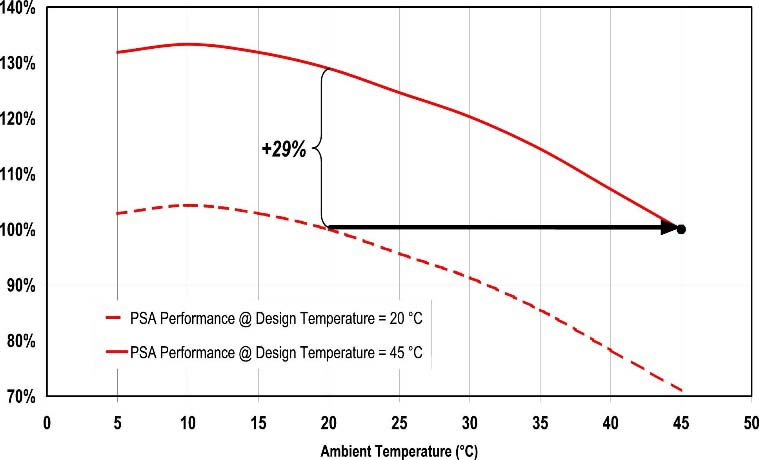The design ambient temperature is the temperature for which the performance data of the PSA nitrogen or oxygen generator is valid. For example, the design ambient temperature for the PSA system of the performance graph of previous question is 20 °C. At this ambient temperature, the performance of the PSA system is identical to the written performance data, but the performance changes at different ambient temperature values, as can be seen in the same graph.
The operating temperature range includes all ambient temperatures at which the PSA nitrogen or oxygen system can be operated. In the before mentioned graph, the operating ambient temperature range is between +5 °C and +45 °C. But the performance of the PSA system changes significantly over the entire operating temperature range!
No here comes the trick many manufacturers apply when they offer you a PSA system and which you should be aware of very carefully:
Making a lot of confusion about design and operating ambient temperatures in their quotations so you believe that the proposed PSA system has a constant performance over the entire operating range. But this is physically impossible!

As the above graphs show you, the size of the PSA generator should be increased by 29% to have the same mass flow at 45 °C as at the previous design ambient temperature of 20 °C. However, in both situations the operating temperature range is equal!
The following table shows you an example of the different approach from NOVAIR:
| NOVAIR | Competition | |
| Design Temperature | 45 °C (specified in offer) | 20 °C (often not specified in offer) |
| Operating Range | + 5 °C - +45 °C | + 5 °C - +45 °C |
| PSA Product Flow @ 20 °C | 129% of Requested Flow Rate | 100% of Requested Flow Rate |
| PSA Product Flow @ 45 °C | 100% of Requested Flow Rate | 71% of Requested Flow Rate |
Conclusion: High risk of insufficient gas supply to your application at high ambient temperatures!

